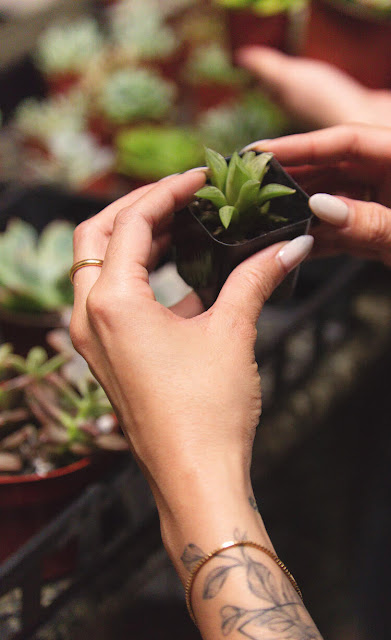
Cactus-themed Paint Night set for Saturday

|
|
This little succulent could make a fine still-life
subject. (Photo courtesy Exotic Plants)
|
Have you ever tried to paint a cactus? Here’s your chance – not to paint the plant itself, but capture its form, color and beauty on canvas.
Exotic Plants is hosting a cactus-themed Paint Night at 5:30 p.m. Saturday, Feb. 26.
With their angular growth, cacti and succulents naturally look sculptural. With their geometric forms, they also make great subjects for still-life painting.
Learn how to capture a cactus or succulent on canvas during this fun event. Tickets include canvas and paint plus snacks and drinks. Tickets are $35 for one person, $55 for two. Seating is limited.
To register, call Exotic Plants at 916-922-4769.
Exotic Plants also is hosting a month-long succulents sale. Buy two succulent plants, get one free, through the end of February.
Exotic Plants is located at 1525 Fulton Ave., Sacramento. For more details, email exoticplantsltd@gmail.net or visit www.exoticplantsltd.com .
Calendar note: Placer's 'Totally Tomatoes' Zoom class canceled
The Placer County master gardeners notified us that the "Totally Tomatoes" live Zoom session they had scheduled for this Saturday, Feb. 26, has been canceled. (Our post on the class appeared last week.)
However, the "Totally Tomatoes" session held in 2021 was recorded and can be viewed on the Placer master gardeners' YouTube channel with this link: https://youtu.be/YWAbncCLURo
-- Kathy Morrison
Comments
0 comments have been posted.Sacramento Digs Gardening to your inbox.
Sites We Like
Garden Checklist for week of July 21
Your garden needs you!
* Keep your vegetable garden watered, mulched and weeded. Water before 8 a.m. to reduce the chance of fungal infection and to conserve moisture.
* Feed vegetable plants bone meal, rock phosphate or other fertilizers high in phosphate to stimulate more blooms and fruiting. (But wait until daily high temperatures drop out of the 100s.)
* Don’t let tomatoes wilt or dry out completely. Give tomatoes a deep watering two to three times a week.
* Harvest vegetables promptly to encourage plants to produce more. Squash especially tends to grow rapidly in hot weather. Keep an eye on zucchini.
* Pinch back chrysanthemums for bushy plants and more flowers in September.
* Remove spent flowers from roses, daylilies and other bloomers as they finish flowering.
* Pinch off blooms from basil so the plant will grow more leaves.
* Cut back lavender after flowering to promote a second bloom.
* It's not too late to add a splash of color. Plant petunias, snapdragons, zinnias and marigolds.
* From seed, plant corn, pumpkins, radishes, winter squash and sunflowers.